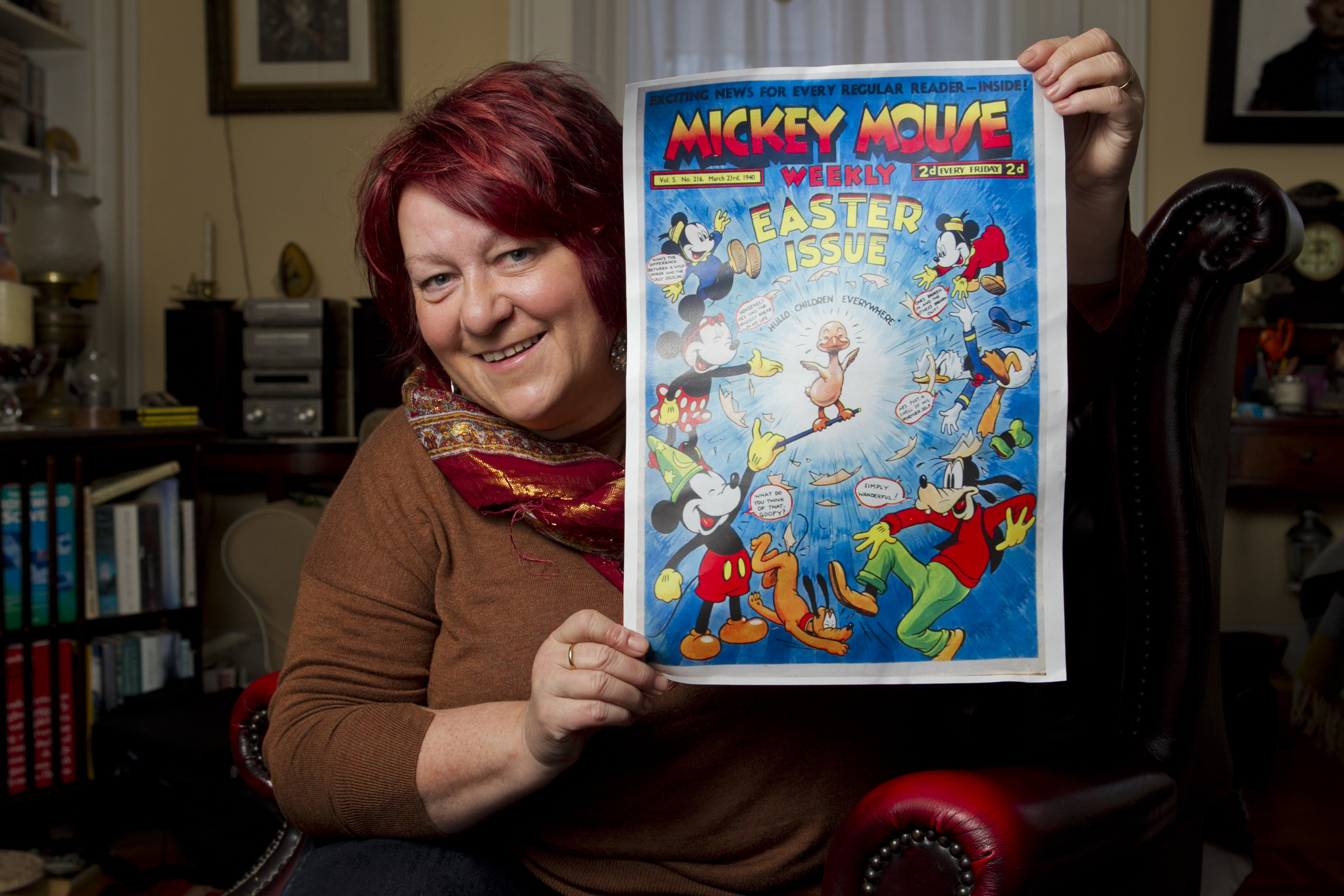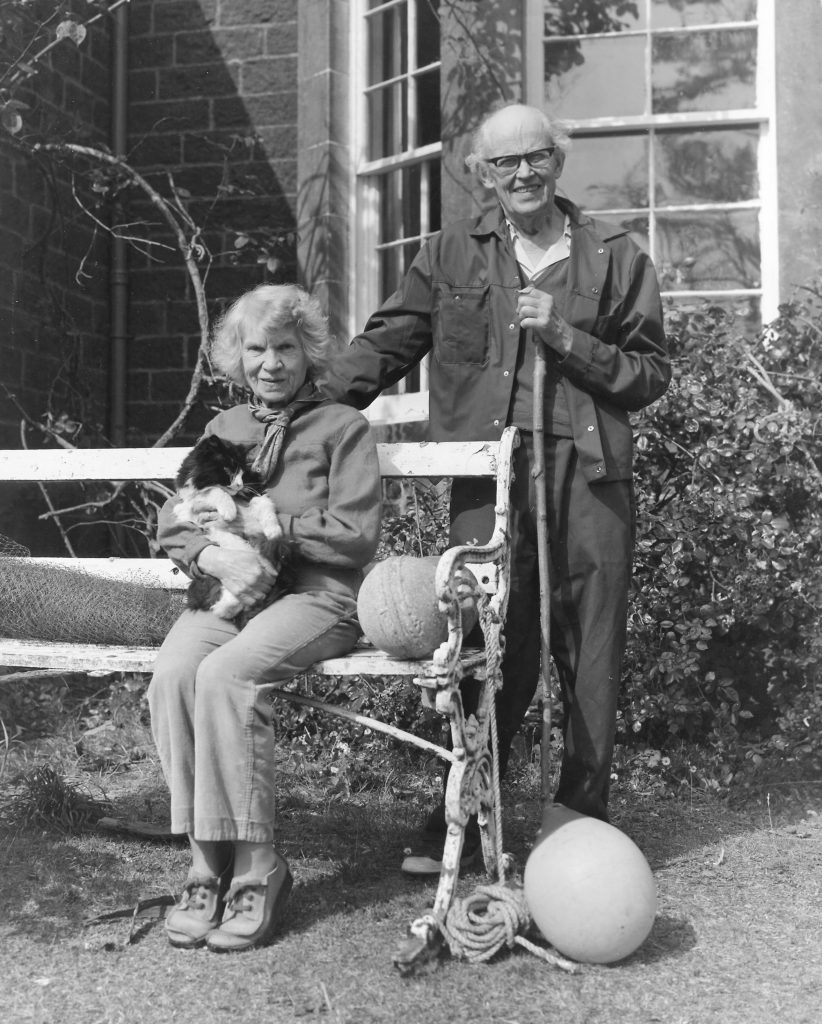
HE was acclaimed as one of Scotland’s foremost Gaelic scholars, a tireless champion of Scotland’s cultural and natural heritage.
A historian, farmer and botanist but John Lorne Campbell had another, more unlikely, enthusiasm . . . for Mickey Mouse comics.
For more than 200 of the rare comics dating from 1937 have been discovered in the attic of Campbell’s old home on the Hebridean island of Canna.
The Disney treasure trove is believed to be worth up to £40,000.
Campbell, who died in 1996 aged 90, and his American-born wife Margaret Fay Shaw had no children but he was so proud of his collection that he even ironed copies to keep them neat.
Campbell gifted Canna and his archives of library and sound recordings to the National Trust For Scotland nearly 40 years ago.
But it seems he was also a collector of less academic material.
Fiona Mackenzie, the trust’s archivist and manager for the Canna House, discovered the comics over Christmas.
She said: “The story of John Lorne Campbell and Margaret Fay Shaw’s creation of the Canna Archive is now well known.
“As we discovered in Canna House’s attic, what is less well known is that John Lorne Campbell’s tastes clearly went well beyond Gaelic literature and poetry and he had a great sense of fun!
“He assiduously collected every copy of the Mickey Mouse Weekly from 1937 until the 1950s and was such a fan of the Disney characters that he even ironed the comics so that they could be kept in pristine condition.
“Over 200 comics have been found, including copies from wartime, which shows the difficulties John Lorne Campbell was willing to overcome in order to keep up with Mickey and friends’ adventures.
“He was well known for his academic prowess and his determination in purchasing Canna and running it as a traditional Hebridean community.
“However, he also had a sense of fun which after all this time people don’t realise and which these comics show.”
Campbell, who was born in Argyll, was the son of Colonel Duncan Campbell of Inverneill and Ethel Harriet Waterbury, an American.
During his time at Oxford University, Professor John Fraser engendered in Campbell a strong love of Gaelic and Scots folklore.
In the 1930s, Campbell was living on the Hebridean island of Barra where, with Whisky Galore author Sir Compton Mackenzie, he founded the Sea League to fight for the rights of fishermen and organised a strike of motorists in protest at having to pay tax on an island with no proper roads.
In 1935 he married American musician Margaret, whom he met on the island of South Uist.
Three years later, the couple bought Canna and went to live there in Canna House. Campbell farmed the island for 40 years and made it a sanctuary for wildlife.
At the same time he continued to record a disappearing Gaelic heritage and wrote extensively about Highland life and culture.
He also compiled a unique collection of butterflies and moths.
In 1981, Campbell gave Canna to the National Trust for Scotland, but he continued to live on the island.
Together, the couple assembled an important archive of Gaelic song and poetry, including manuscripts, sound recordings, photographs and film.
Campbell died in 1996 while on holiday in Fiesole in Italy and, in accordance with his wishes, was “buried where he fell”, but in 2006 his body was returned to Canna and reburied in a wood he planted himself.
His widow remained at Canna House until her death in 2004 at the age of 101.
The chance discovery of the comics comes at a time when the island’s population has fallen to around 15.
Canna, 23 miles out into the Atlantic, once supported a population of more than 400 people in the 1820s.
The isle is just 4.5 miles long and 1 mile wide, and attracts around 10,000 visitors each year.
As well as its rich cultural heritage, the place is renowned for its golden eagles and thousand of puffins, razorbills and Manx shearwaters.
Mickey Mouse Weekly was the first magazine with full colour photogravure printing.
Willbank Publications and then Odhams Press released 920 issues of the magazine between February 8, 1936 and December 28, 1957.
They were said to be “drawn in a slick, smooth style which was clearly influenced by American comics”.
Walt Disney then published Walt Disney’s Mickey Mouse, renamed Walt Disney’s Weekly in 1959 and discontinued in 1961.

Enjoy the convenience of having The Sunday Post delivered as a digital ePaper straight to your smartphone, tablet or computer.
Subscribe for only £5.49 a month and enjoy all the benefits of the printed paper as a digital replica.
Subscribe

